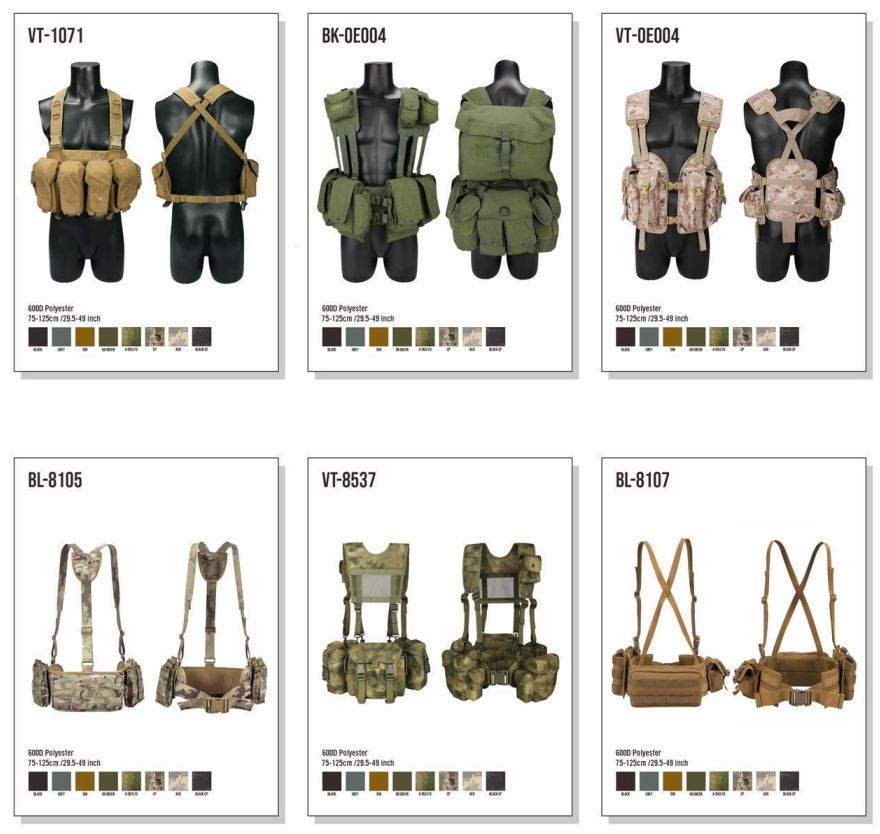As a military or tactical professional, the equipment you choose can determine the success or failure of critical operations. Your tactical vest, in particular, serves as a lifeline by keeping essential gear within easy reach so you can focus on objectives. With many options available, selecting a vest suited to your needs is key.
I. Key Factors to Consider

①**Functionality**
Consider how much equipment you carry and choose a vest with ample space and pockets to organize necessities. Look for features like MOLLE/PALS webbing to attach accessories. Internal organization maximizes efficiency.

②**Comfort**
For long durations, comfort is crucial. Seek breathable, adjustable vests with ventilation to avoid overheating. Ill-fitting vests restrict movement and reduce endurance. Adjustable straps customize fit.

③**Modularity**
Interchangeable components adapt to changing needs. Modular vests reconfigure for diverse demands. They allow removing or repositioning pockets and straps as required.

④**Capacity**
Ensure the vest carries equipment you need for extended periods. Consider body armor, hydration packs, tools, medical supplies and extras. MOLLE webbing and pockets organize substantial loads.

⑤**Protection**
For high-risk situations, vests hold ballistic plates. Plate carriers provide maximum ballistic protection and peace of mind in dangerous environments. They resist impacts from firearms and edged weapons.
II. Operational Considerations
Choose a tactical vest suited to your specific operational environments, needs and responsibilities.
III. Types of Tactical Vests
General Purpose Vests provide versatile, all-purpose functionality for adaptability to a wide range of missions where substantial equipment loads and maximum mobility are required. Designed to carry a variety gear with abundant pouches, pockets and straps, these vests serve as a blank canvas for configuration to needs. They suit operators tasked with diverse operational duties in unpredictable environments. Look for a general purpose vest offering considerable space, multiple points of adjustment and modularity through interchangeable components.

Plate Carrier Vests feature special pockets to hold NIJ ballistic plates for increased protection. They provide the enhanced safety of an armored vest while maintaining adaptability to equipment loads. Plate carrier vests work well for missions where ballistic threats are probable but maximum mobility remains a priority. Look for options that securely and comfortably accommodate the size and weight of plates required for your operational risks. Test the vest with plates inserted to ensure unrestricted shoulder movement and natural range of motion.

Load-Bearing Vests are purpose-built to distribute heavier equipment loads more comfortably over long distances and during physically demanding circumstances. They suit operators tasked with transporting weapons, ammunition, tools, medial equipment and other sizable gear over rough terrain for extended periods. Look for a load-bearing vest with extensively padded straps, ventilation to prevent overheating and moisture-wicking material. Adjustability at multiple points helps ensure balanced distribution customized to the amount and types of equipment being carried for maximum endurance. Attachments allow securing gear to avoid shifting or bouncing with movement.

IV. Sizing, Fit and Quality
For maximum effectiveness, choose a vest that fits properly based on body type and equipment load. Look for durable, high-denier materials and reinforced components. Examine construction and read experienced reviews to determine quality. While higher cost, quality vests save money and lives long-term.
V. Care and Maintenance
Clean vest after each use, inspect regularly for damage and make any needed repairs to avoid failure. Tighten loosened straps/connections and replace torn parts immediately. Store in a cool, dry place away from heat/humidity. Proper care extends useful life, but consider manufacturer guidance on replacement.
VI. Keeping Up with Advancements
New materials like ripstop nylon increase breathability and durability. Angled MOLLE webbing follows vest contours to maximize space. Built-in hydration systems, heating/cooling elements allow high-intensity work in varied conditions. Stay up-to-date with improvements for optimal functionality and safety.
VII. Conclusion
Choose a tactical vest specifically suited to your needs based primarily on your operational requirements for functionality, comfort, equipment capacity, modularity and protection levels. Look for high-quality, adjustable and rugged vests with substantial carrying space and adapt quickly changing mission demands. The right tactical vest can serve as a practical lifeline, keeping supplies and tools within reach so you can focus fully on objectives without burden. Invest in the best solution for your needs to optimize potential for success and safety. Your vest is a partner that makes the difference in dynamic, high-risk environments—choose wisely.
In summary, choose a tactical vest based primarily on your specific operational needs and requirements. Look for a high-quality vest that provides the appropriate level of functionality, comfort, capacity, modularity and protection for your duties. The right tactical vest acts as a practical lifeline, keeping critical gear within easy reach. Invest in a solution suited to your unique responsibilities to optimize your effectiveness and safety.
FIND THE RIGHT TACTICAL VEST FOR YOUR OPEARTION